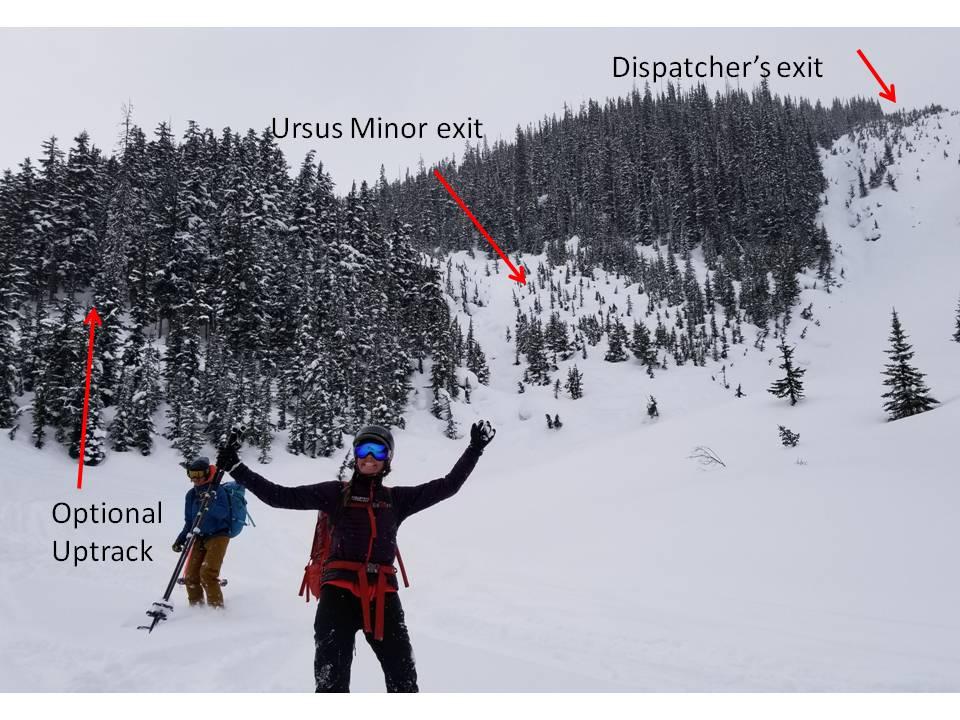We headed up Connaught Ck. today to see how things looked after the recent storm cycle with no clear destination in mind.
On our travels up valley we noticed spindrifts off the N. aspect of Mt. Cheops and genreally squally winds. To accommodate this we chose to avoid exposure to STS couloir by exiting the valley earlier than the standard route that traverses the bottom of the "General Hospital" gulley on its way to Ursus Minor Bowl/Trees (for some reason also called "Hospital Bowl") - see photo for reference.
I have to admit that we were enticed by the "call of the Powder siren" and started to head towards the ridge leading to Bruins Pass and 8812 bowl. Enroute my pole probing discovered a consistent weakness just above the buried suncrust (on this aspect) that was down 50cm and below a 10-15cm thick stiffer layer (4F to 4F+), the upper 30cm was low density and lacked slab properties in the morning(hence the call of the siren!).
These snowpack properties convinced me that more time and info would be needed before I was willing to deal with serious consequence terrain and given that there was lots of lovely skiing to be had in moderate terrain this was easy to accomplish once we dissuaded ourselves of the Bruins pass notion.
March has a history of serious avalanche incidents and the current storm cycle has loaded up some persistent layers after an extended period of predictable snow stability. These storm events introduce uncertainty to our information and TIME(to gather information and to allow layers to bond) is one of the required elements to reduce this.
A 50cm storm slab overlying persistent weak layers also presents a high consequence potential that should not be taken lightly.
Keep 'em slippery side down!
Scott Davis
Mountain Guide

